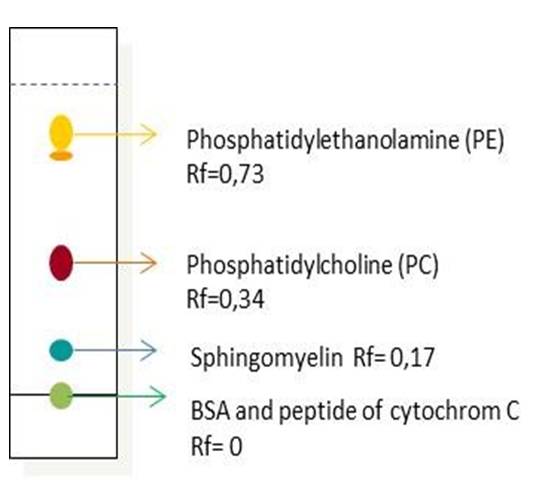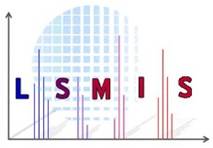|
Introduction
Matrix-assisted laser desorption ionization (MALDI) is a soft ionization technique used in mass spectrometry usually in association with a Time of flight (TOF) mass spectrometer. Conventionally, the analyte mixed with a matrix is deposited on a target steel. After crystallization of the deposit, the target is introduced into the mass spectrometer. The result is a mass spectrum of the global set of the deposited sample. In the study of natural substances, biological material or archaeological artefacts, various components are present: lipids, salts, proteins, sugars… This complexity makes the global interpretation impossible and requires a separation method. Therefore hyphenated Thin-Layer Chromatography (TLC)-MALDI-TOF seems perfectly suited. It allows us to work with very low amounts of samples without any extraction before analysis, to see minor compounds and limit losses and contamination. For the first time, this technique was applied to a mixture of phospholipids, proteins and peptides.
Experimental conditions
The analysis of phospholipids is already known by TLC-MALDI. They are separated on TLC plate by elution with DCM/MeOH/H2O/Et3N (35:35:7:35). Once the TCL plate is dry, the matrix is sprayed and the plate is directly introduced in the mass spectrometer. This method was tested on protein (BSA, bovin serum albumin) and peptides of Cytochrome C. Any of these compounds were detected. To solve this difficulty, a new step was added in the experimental protocol. After elution of the components and drying, methanol is sprayed on the plate which is placed 2 minutes in a vessel saturated with methanol vapor. The matrix is directly sprayed after this step.
Results
Finally, with this new protocol, phospholipids are separated with different frontal positions. Contrary to phospholipids, proteins do not migrate but are clearly detected.
Conclusion
TLC-MALDI-TOF is ideal to study complex samples. Adding the extraction step allows the simultaneous analysis of samples containing phospholipids, proteins and peptides without any prior treatment.
|
|

TLC plate diagram with the new protocol. Phosphatidylcholine, Phosphatidylethanolamine, Sphingomyelin are three phospholipids.
|



